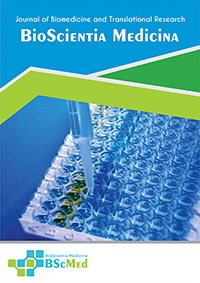Main Article Content
Abstract
Background: Firework-related ocular trauma represents a significant, preventable cause of severe vision loss, with incidence rates peaking during global cultural and national festivals. While the risks to active firework users are well-established, the burden of injury sustained by passive spectators, or bystanders, remains poorly quantified. This study aimed to synthesize global data to define the magnitude of this unseen danger.
Methods: A systematic review and meta-analysis were conducted following PRISMA guidelines. PubMed, Scopus, EMBASE, and Web of Science were searched for studies published between January 2015 and December 2025 that reported separable data on firework-related ocular injuries in bystanders and operators. A random-effects model calculated the pooled proportion of bystander injuries. Secondary outcomes included pooled odds ratios (ORs) for open globe injury (OGI) and severe vision loss (SVL; Visual Acuity <3/60).
Results: Eleven studies, encompassing 2,440 patients, met the inclusion criteria. This meta-analysis, despite significant heterogeneity in the source data (I² = 89%), suggests that nearly half of all victims were bystanders, with a pooled proportion of 47.5% (95% CI: 41.8%–53.2%). Bystanders had significantly lower odds of sustaining an OGI compared to operators (pooled OR: 0.72, 95% CI: 0.58–0.90). However, the odds of suffering permanent SVL were not statistically different between the two groups (pooled OR: 0.91, 95% CI: 0.73–1.14), indicating a comparable risk of blinding injury.
Conclusion: These findings must be interpreted with caution due to high inter-study heterogeneity and unmeasured clinical confounders. Nonetheless, the analysis strongly suggests that the risk to bystanders is unacceptably high and that public health paradigms focused solely on operator safety are insufficient. This study underscores the urgent need for prospective, standardized data collection and a shift in prevention strategies toward protecting passive spectators.
Keywords
Article Details
As our aim is to disseminate original research article, hence the publishing right is a necessary one. The publishing right is needed in order to reach the agreement between the author and publisher. As the journal is fully open access, the authors will sign an exclusive license agreement.
The authors have the right to:
- Share their article in the same ways permitted to third parties under the relevant user license.
- Retain copyright, patent, trademark and other intellectual property rights including research data.
- Proper attribution and credit for the published work.
For the open access article, the publisher is granted to the following right.
- The non-exclusive right to publish the article and grant right to others.
- For the published article, the publisher applied for the Creative Commons Attribution-NonCommercial-ShareAlike 4.0 International License.





